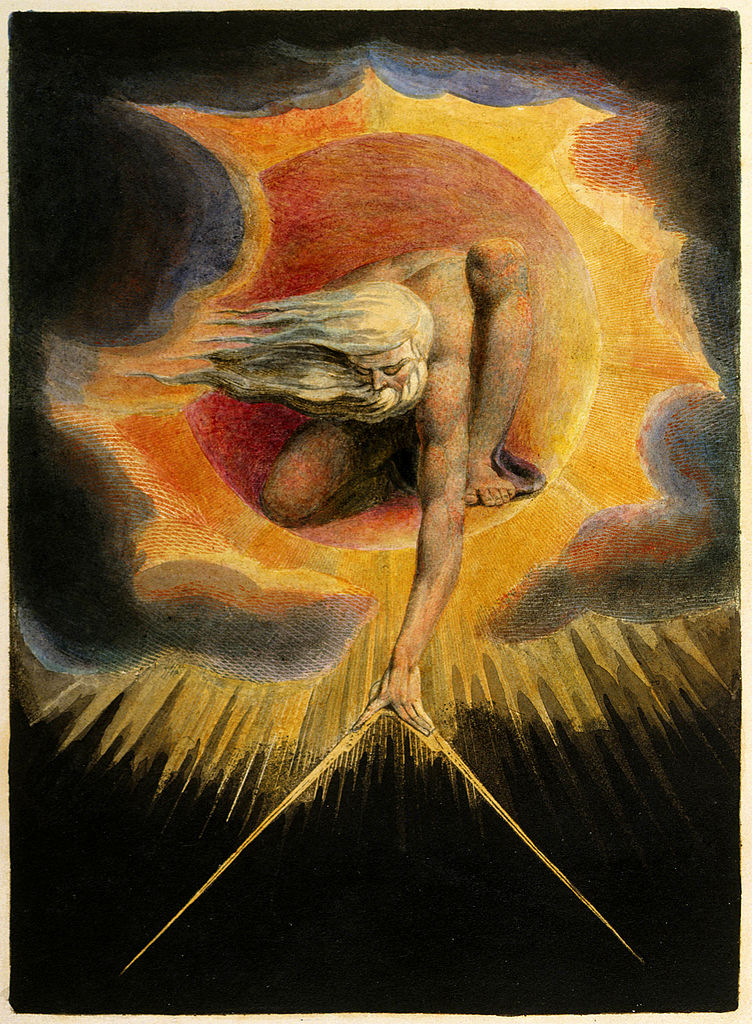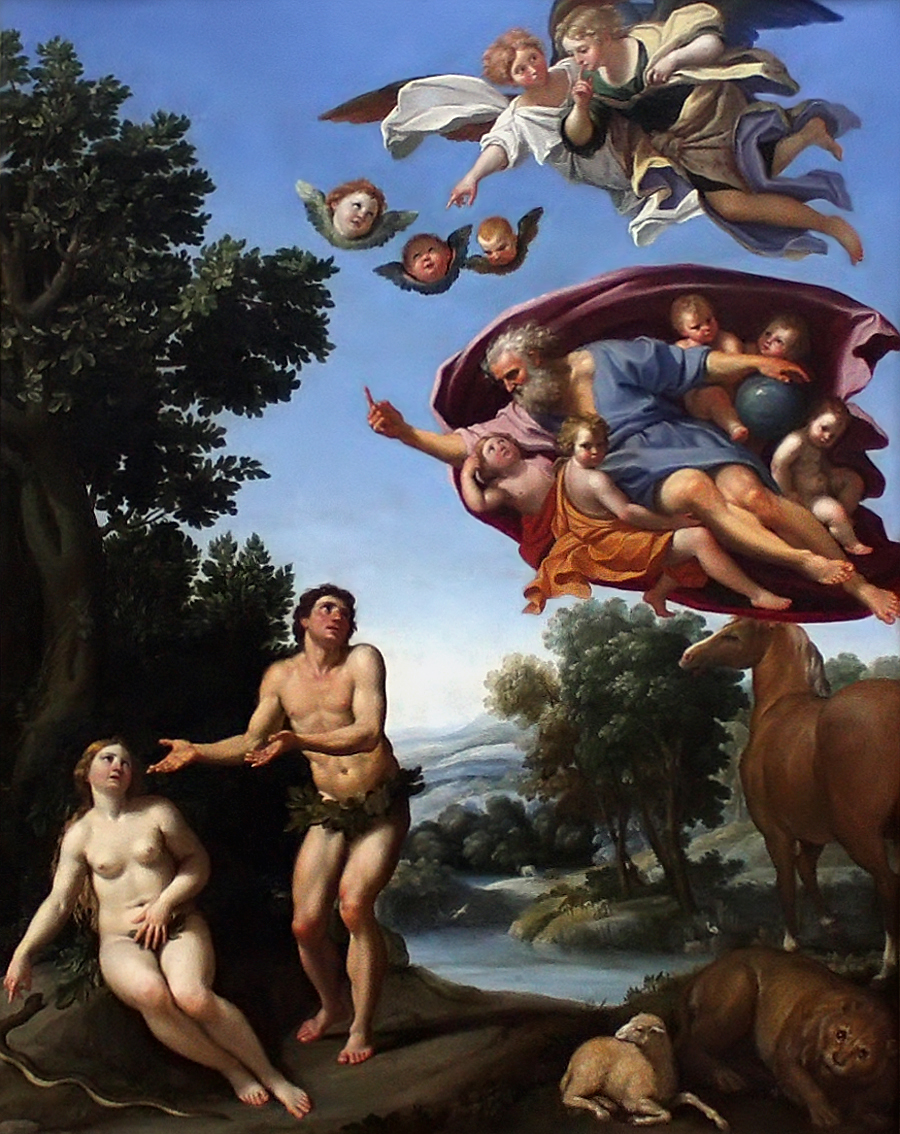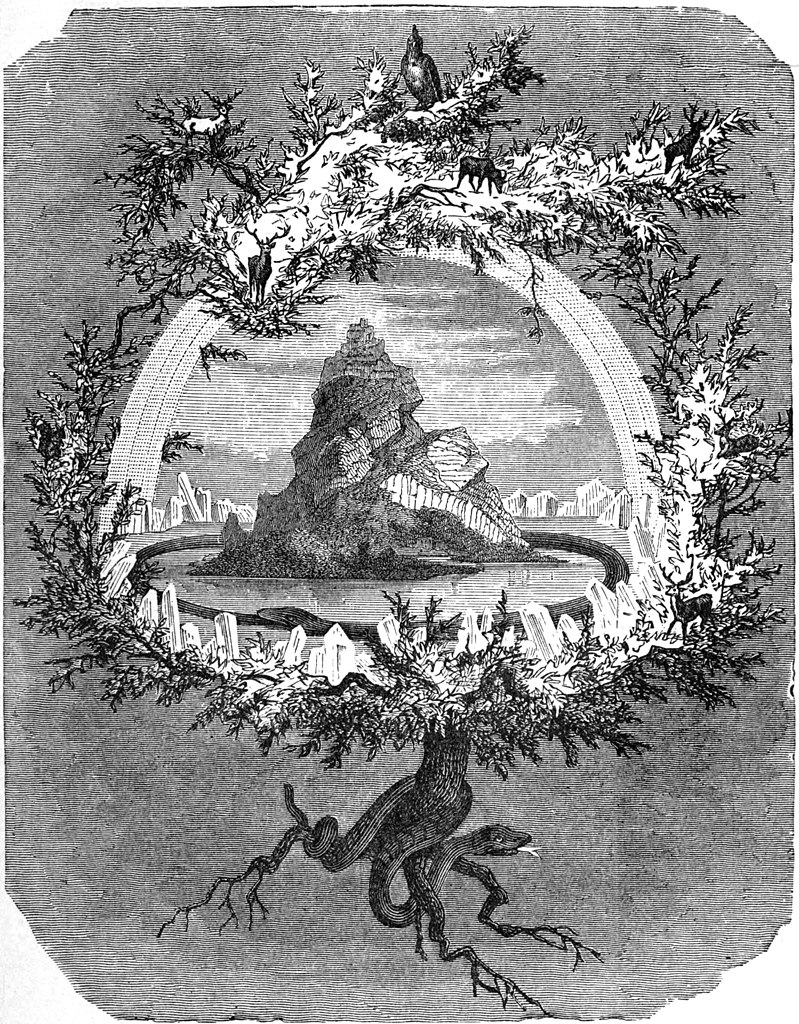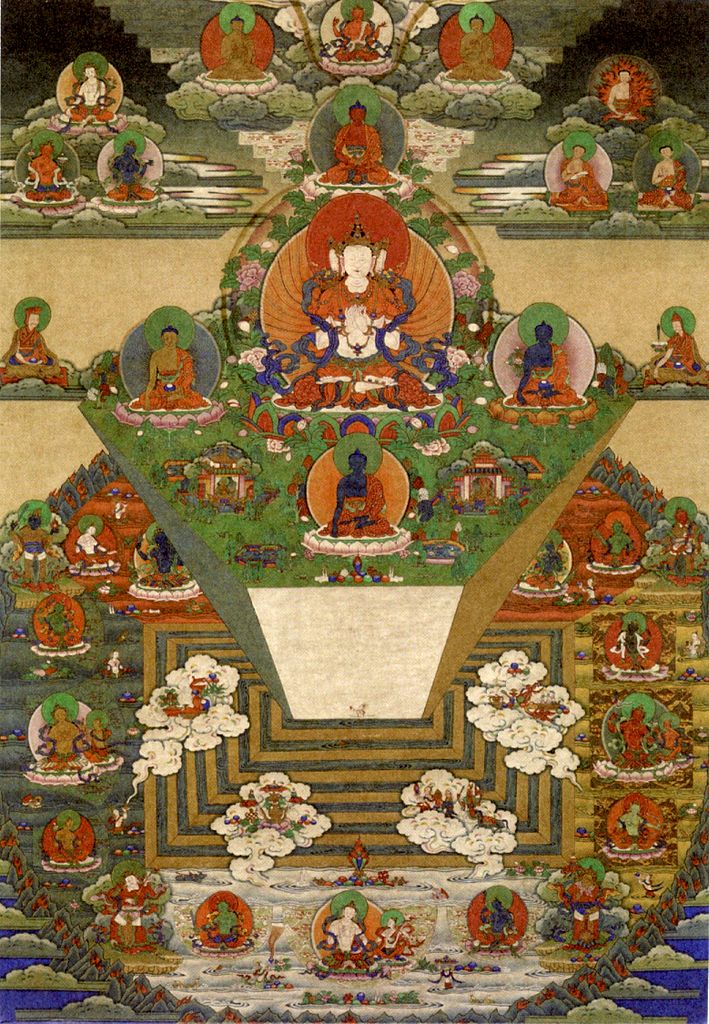
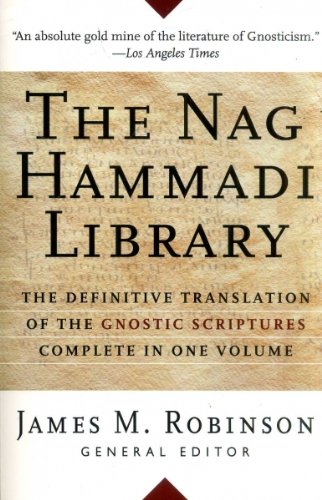

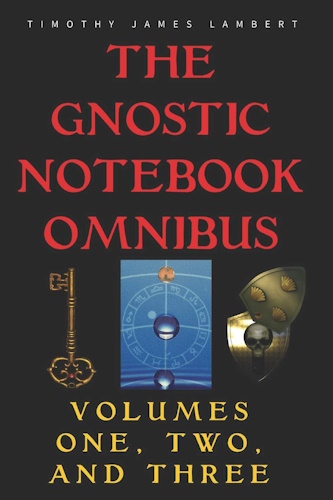

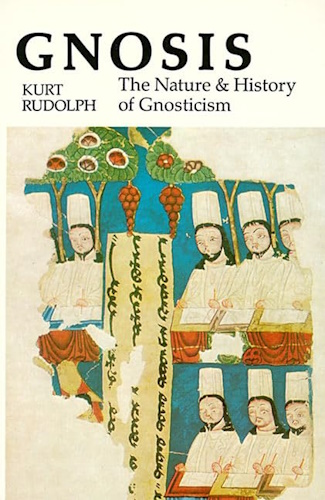



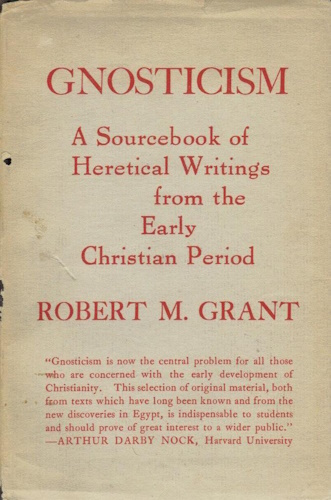

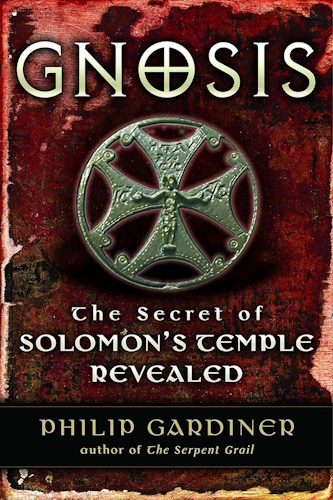



![]()
![]()
8 - Polar Mythology
montalk.net 13 September 11
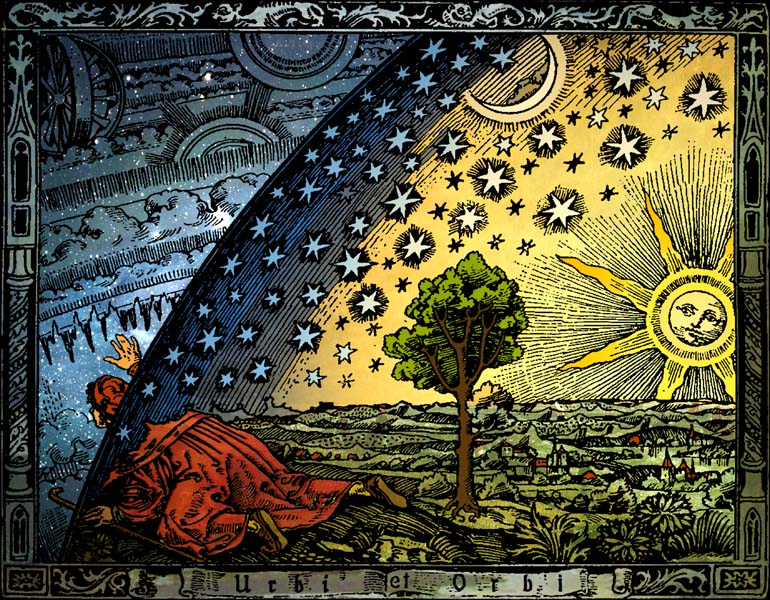
The Meaning of Myth
Since myths are not literal accounts of history, they are easily dismissed as superstitious tales invented by our naïve ancestors. But what society considers factual, historical, and real is only that which has taken place within linear time and 3D space, namely events witnessed through the five physical senses.
Far from being less than factual, myths may depict events and dynamics that are more than factual because they hail from beyond the limited modern conception of reality, beyond linear time, and beyond the five senses. Myths can be symbolic vehicles for conveying that which transcends linear history.
What are myths really? They are the collective equivalent of dreams. What both have in common is that they span the spectrum from mundane to profound, they can be oracular or prophetic, they can convey hidden knowledge, and they employ symbolic elements to encode meaning. Profound dreams and myths are coded messages from beyond.
Like dreams, myths allow passage of information across the boundary between realms. It seems that archetypes are shared currency between our world and others. In dreams, the subconscious or higher mind employs a cryptic language of symbols to encode a message. Same with myths whose symbolic characters, places, and story lines encode messages from intelligences beyond our realm. Interpretation of myth is therefore similar to interpretation of dreams.
Myths are also like time capsules with nested layers, each layer encoding information intended for one type of recipient. Possible layers include:
- Entertainment and Morality Layer – the outer wrapping that ensures the myth propagates through the generations.
- Historical Layer – ensures that history of the people is remembered.
- Esoteric Layer – provides initiatory instruction to empower those of a higher spiritual caliber.
- Technological Layer – provides scientific instruction on technologies likely to become lost over time, such as alchemy, astronomy, or higher demiurgic technology.
- Hyper-Historical Layer – concerns events and dynamics of the future and the world as it exists before/beyond linear time. This layer is aimed at those within the bubble of linear time who seek Gnosis of what lies outside.
The deeper layers piggyback upon the shallower ones, and the entire bundle is unsuspectingly passed down the generations by commoners who enjoy the myth for its moral or entertainment value. Information stored this way can survive for thousands of years.
Myths also allow for passage of information across discontinuities between world ages, when one world disappears and another appears. Since consciousness resides beyond matter, energy, space, and time, myths embedded in the collective subconscious survive such reconfigurations. Hence, these myths may propagate hyper-historical truths and tell of events and dynamics before, after, and beyond the current timeline.
Lastly, note that myths are not restricted to those from ancient times. Modern fictional films, television series, music, and literature may also be mythical in nature, depending on its content and true source. Obviously some are just superficial fluff, but others are equal or higher in profundity than the greatest of classical myths.
Therefore the whole gamut of myth from dreams to ancient mythology to modern fiction is fertile ground for extracting the esoteric, technological and hyper-historical layers of information. These layers are embedded by beings who exist before and beyond our world. In a way it's all part of an ongoing process of hyper-dimensional steganography aimed at passing synchronistically or symbolically encrypted messages to strategic recipients within the bubble of linear time.
Polar Mythology
Myths from different cultures can share common elements. The most universal elements pertain to the human process of psychological growth and transformation. Joseph Campbell called this universal template the "monomyth" or the "hero's journey" and its derivatives can be found the world over. Expressions of the monomyth can arise independently because core human psychology is the same everywhere.
But in context of the Gnosis series, what we are looking for is something more specific than the monomyth, something that concerns the very nature of existence and the events that precipitated our reality. This smaller subset of myths I call "polar mythology" because they concern the battle between the poles of Creation, employ the symbolism of rotation or reciprocation around a central axis pole, and because "polar" implies "extreme north" and hence "hyperborean," which alludes to the Nordic meta-civilization deeply involved in these matters.
Polar myths are too specific to be mere encoding of human psychological processes; they deal with the origin and fate of our world, the corruption of the timeline, the warring over demiurgic technologies, the timewar, and the mechanism behind transitions between world ages. Thus they are fundamentally Gnostic in their essence.
Ancient polar myths are Proto-Indo-European in origin, seeded by Atlantean survivors whose ancestry traces back to the off-world Nordic alien meta-civilization.
Modern polar myths may also originate from this meta-civilization via telepathic transmission, dream manipulation, direct contact between alien and contactee, or secret societies transmitting it orally to an initiate who works in the creative industry.
Core Elements of Polar Mythology
There are several repeating themes in polar mythology:
1) Our having fallen from a higher to lower realm.
2) The World Axis represented by a pillar, mountain, cross, or tree.
3) Dueling superhumans engaged in a tug of war.
4) That which the World Axis rests or depends upon: a foundational element represented in the cubical stone, turtle, keystone, plug, cornerstone, or capstone.
5) Vortex symbolism and magical "objects of plenty" that could materialize abundance or destruction depending on their use.
6) Cataclysmic unhinging or skewing of the World Axis.
7) The avenging hero, prodigal son, or innocent fool who overthrows corruption and restores balance.
These elements can be found scattered across Grail lore and the myths of the ancient Hindus, Scandinavians, Egyptians, Sumerians, Meso-Americans, and Chinese.
Since this article aims to be as brief as possible, readers desiring a more thorough tour of ancient polar mythology should read Hamlet's Mill by De Santillana and Von Dechend, The Mystery of the Grail by Julius Evola, and to a lesser extent The Hero of a Thousand Faces by Joseph Campbell. While these authors held mundane interpretations of polar mythology, anyone familiar with my Gnosis series can interpret the same data from a more profound context.
The seventh element I will discuss in the next and final Gnosis article, as it concerns the spiritual pathway through and beyond the Matrix Control System. For now, let's examine the other core elements:
1) Our having fallen from a higher to lower realm.
We see this element in the story of Adam and Eve, the Lucifer Rebellion and fallen angels, what Orfeo Angelucci was told regarding members of a meta-civilization that fell into 3D Earth incarnation, the Matrix Trilogy where humanity was imprisoned into a simulated reality, or Dorothy falling along with her house into the Land of Oz.
This is the central tenet of Gnosticism, that we are in this world, but not of this world, and that the Corrupted Demiurge created the world as we now know it.
The Fall of Man originates with the primordial schism between the Demiurge and Logos, when Creation went awry. This cosmological event outside linear time rains fragments of itself down into linear time like an aerial explosion scattering fragments to the ground. Each fragment enters linear time as a particular event repeating the "Fall of Man" archetype. What they all have in common is that beings nearer to the Logos are further ensnared within the realm of the Corrupt Demiurge.
Put another way, historically, the Fall is not a single event, but a series of diminishing "bounces" that bring us ever closer to flatlining, a process that is still ongoing but reaching its head. The grand "Fall" is still happening. The flatline is when humanity achieves the "ground state" in terms of spiritual energy, which is when the Fall reaches completion and the Corrupt Demiurge wins. This is now being carried out via the negative alien agenda to hybridize us, so that we become genetically locked into this ground state. It is only logical that, for the human species, the Fall ends the same way it ultimately began: through genetic engineering by malevolent alien factions.
The best known myth incorporating these ideas is the story of Adam and Eve, inspired by earlier Sumerian and other sources. According to the version found in the Book of Genesis, before Adam the world was populated by flora, fauna, and primitive humans. Then came Adam, and from him, Eve, who were different from other humans in that they possessed the faculty of Spirit and lived in a paradisal realm. In this Garden of Eden, they were in direct communion with the divine. They were half-animal, half-divine beings who were childlike in their innocence, pure and naïve. This speaks of the human soul collective in its original "3D STO" state of existence.
In the Garden were two trees, the "Tree of Knowledge of Good and Evil" and the "Tree of Life." Concerning the first, Adam was promised death if he ate of its fruit. The trickster Serpent then approached Eve and convinced her to eat from the Tree of Knowledge, and through her tempting, Adam also took a bite. Seemingly contrary to God's warning, they did not die; of course not, here the myth implies spiritual death, not physical death, and that is what the Fall represents. Upon eating the fruit, they both became aware of their own nakedness and felt shame. Afterwards they were banished from the Garden of Eden for disobeying the warning, cast into the wilderness where the animals and other humans were living by the law of the jungle.
In the above, the myth encodes several things:
1) The naïve human soul group acquiring the faculty of freewill, hence their disobeying the command not to eat, for only through freewill is defiance possible.
2) Their acquiring true self-awareness, symbolized by becoming aware of their own nakedness.
3) Disconnection from the divine, hence being cast out of the Garden.
In other words, it speaks of our disconnection from Spirit and the acquisition of lower ego or lower intellect, which is our internal uplink to the Corrupt Demiurge. It symbolizes the grafting upon our pure souls of what Castaneda calls "the Predator." This event was our insertion into the Matrix energy farm.
And yet, it is through ego, intellect, and direct experience of brute physicality that we can even acquire personal wisdom concerning the difference between good and evil and their inner workings. Why is that wisdom necessary? Because in the end it makes us more powerful, resilient, and spiritually mature. Otherwise we would remain naïve, vulnerable, isolated, and weak: incapable of going where angels fear to tread.
Achilles bathed in the blood of the dragon and thereby acquired near invincibility; Dorothy wore the ruby slippers of the Wicked Witch's sister; Luke Skywalker, Harry Potter, John Riddick, and Neo had a piece of their enemy inside them, but it gave them the power they needed to conquer the enemy. Our ego and intellect is what, by default, makes us servants of the Corrupt Demiurge. But if conquered and placed in service of Spirit and Logos, these same faculties serve a higher function of providing discernment and personal power needed to overcome the Matrix Control System. Hence the Biblical advice to be "wise as serpents, gentle as doves" — if only one or the other, we fall into the false dichotomy of being either predator or prey.
Eating from the Tree of Knowledge directly implies expulsion from a higher realm into a lower one where Good and Evil exist in violent admixture, in order to "digest" the knowledge offered. Indeed, this is a kind of spiritual death (or coma, as with Sleeping Beauty and Brunhilde). None know death better than those who have come closest to it. The trick is returning to life before one dies fully.
Despite being a trickster, the Serpent is a symbol of wisdom because it offers a gamble; if conquered, it brings otherwise inaccessible wisdom; from friction arises fire, and from darkness arises light. We see this microcosmically in our own lives every time dark forces take a gamble in attempting to take us down; if we triumph, we acquire a new power, pathway, and wisdom that makes us more resilient and allows us to empower others in similar situations.
In Genesis, the Elohim who said, "Let us make man in our image" represent our original, presumably well-meaning, genetic creators. When Adam ate from the Tree of Knowledge of Good and Evil, the Elohim commented with worry that, should Adam now also eat from the Tree of Life, he should become just like them. What does that imply about the Elohim? It suggests they were immortal superhumans who had mastered the knowledge of good and evil; in other words, they are higher echelons of the meta-civilization existing outside linear time.
Meanwhile, the Serpent represents the meta-civilization forces obedient to the Corrupt Demiurge. They were instrumental in genetically modifying the human race toward its current condition: no longer pure, innocent, children under the stewardship of the Logos, but crippled beasts with the claws of intellect and ego, thrust into the domain of the Corrupt Demiurge.
So after the expulsion from paradise, Adam and Eve existed in a limbo state. They were on their way toward knowing Good and Evil, but did not yet transcend their mortality. This accurately portrays humanity's current state, hanging in the balance between two ultimate outcomes.
In one outcome, the ultimate low point is reached where the fruit is fully swallowed and digested, and total spiritual death ensues; fortunately we are not there yet, hence the larynx has been linked to "Adam's Apple" to signify it is in the throat, not yet fully swallowed.
In the other outcome, we eat from the Tree of Life, and that pertains to everything discussed so far concerning Gnostic awakening, Etheric Tide, and the Christ thoughtform mediating our harmonization with the Logos. Hence in New Testament symbolism, the Kingdom of Heaven carries shades of the Garden of Eden, Christ is the means toward obtaining Life (like the Tree of Life), and the sayings of Jesus speak highly of having a childlike purity.
Stated in terms of the Cassiopaean paradigm, our primordial 3D STO human soul matrix naïvely elected to incarnate into a 3D STS gene pool prepared by 4D STSgenetic engineers. Together with clarifications made by Boris Mouravieff, the picture revealed is that we were once simple beings without ego or intellect, but who had some of our higher faculties intact and were in full harmony with the Logos. After the Fall, our higher faculties were disconnected and we developed lower ego and lower intellect. Through the latter we would achieve the possibility of wisdom and discernment, though also the possibility of propagating evil. Once discernment reaches sufficient perfection, the optimal outcome is that our higher faculties also return, allowing the development of the higher intellect and thus co-equal existence with the "gods."
One can recognize these elements in the story of the prodigal son who leaves home out of foolish adventurism and rejection of the father, learns his lessons and grows wise, then finally returns home with newfound appreciation. Ironically, the prodigal son who rejected the father ends up being closer to him than the other son who never left. To truly choose "God," one must first have rejected "God," for only through such an initial exercise of freewill can one develop enough freewill to later make a meaningful choice of allegiance. This is what separated Adam and Eve from the Elohim, the first being close to God by intrinsic nature, the latter by choice. Parzival cursed God and finally severed his ties to any divine overseer, and only then developed the independence, strength of will, faculty of discernment, and the spiritual maturity to be divinely appointed as winner of the Grail.
That seems to be the primary story of humanity and probably why, in the grand scheme of things, we are even allowed to be in this spacetime bubble established by the Corrupt Demiurge, in bodies genetically designed by its Archonic agents. It's a gamble that pays off with our acquiring power, wisdom, and discernment otherwise impossible to acquire, but with the risk that we flatline and stay here forever in this "black iron prison." The greatest gains come with the greatest risks.
Contrary to what fundamentalist Christianity attempts to pound into its subjects, Original Sin is not some primordial shameful act of dirtiness that we should all feel guilty over; it is not a moral error, but, as Philip K. Dick realized, an intellectual error that can only be corrected through a Gnostic awakening.
It was intellectually naïve for our spiritual ancestors to so easily and enthusiastically think that 3D STS physicality was an attractive and worthwhile thing to experience. But that's a repeating pattern, one we still see today with stories of souls incarnating into the human sphere having signed up for more than they bargained for. They come with high hopes and overconfidence only to get beaten down, programmed, and shredded by a monstrosity of a machine that is the Matrix Control System. The naïveté comes in not foreseeing the risks that this opportunity brings. For humanity, the risks now threaten to permanently extinguish what little spiritual light we have left.
The teachings of Christ, among others, provide pointers on achieving transcendence. Thus in theology, Christ is said to have "died for our sins" — to have atoned for the Original Sin committed by Adam and Eve eating the forbidden fruit. While fundamentalists interpret this in a literal and moral way, in actuality everything points to a more symbolic and Gnostic interpretation. The Fall of Man is an ongoing process and so is the mission of Christ. The latter came into existence to neutralize the first, but the neutralization has not yet been accomplished. The ultimate outcomes of the original Fall and the intervention of Christ exist as the two ultimate probable futures from which the Yahweh and Christ thoughtforms originate.
Wherever the Logos and Corrupt Demiurge clash and the latter secures a temporary victory, a fall occurs. This scales down fractally into the little choices we make everyday. Aside from the human soul group incarnating into crippled genetics, other examples exist of such falls. One is the Nordic meta-civilization blowing up their planet and emigrating to the cruder Earth realm. Another was the Ark Stone being used to alter history. In every case, one or more individuals made a naïve choice based on ego with spiritually disastrous consequences.
2) The World Axis represented by a pillar, mountain, cross, or tree.
The World Axis is an abstract idea meaning that which lies at the heart of existence, the central fulcrum that moves and supports the manifested world. It takes various forms in polar mythology.
In Genesis, the World Axis is the Tree of Knowledge. Eating from it implies incarnation into 3D linear time, the so-called Wilderness or World as distinct from the Garden of Eden or Kingdom of Heaven. The Wilderness is where spiritless humans, Archonic powers, and the Corrupt Demiurge reign. Hence the Tree of Knowledge and the World Axis are linked to the concept of linear time. Trees are a perfect metaphor for time due to the way they branch in three physical dimensions just as timelines do in three temporal dimensions.
In Norse mythology, however, the world tree Yggdrasil represents the central framework supporting the various realms. Here the World Axis has more of a spatial connotation.
Mount Meru of Buddhist mythology is another example of a spatial supportive structure.
Putting these together, the World Axis pertains to the framework of spacetime, the medium through which all form and motion arise. One symbol that combines both aspects is the cross, the horizontal signifying space and the vertical time.
Additionally, the ancient symbol of the solar cross, a circle divided into quarters, represents among other things the four seasons, which imply both time via the passage of the year, and space via the four positions of Earth around the Sun. (It also resembles a millstone or the Ark Stone as depicted on a Sumerian tablet, discussed below).


The symbol of Jesus crucified, whose literal interpretation was rejected by Gnostics and Templars, may actually mean crucifixion upon the cross of space and time. It would mean incarnating into linear space and time for the sole reason to redeem those who fell into it. The correct meaning of the phrase "dying for our sins" would mean "entering spacetime for concern over our fallen condition."
In Norse myth, the god Odin likewise hung from Yggdrasil, bleeding and dying. In the process, he received the archetypal symbols of the Runes by reading their pattern and meaning in the branches of the World Tree.
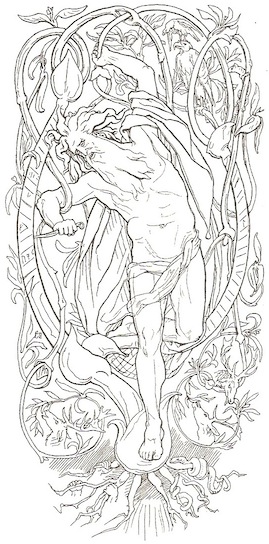
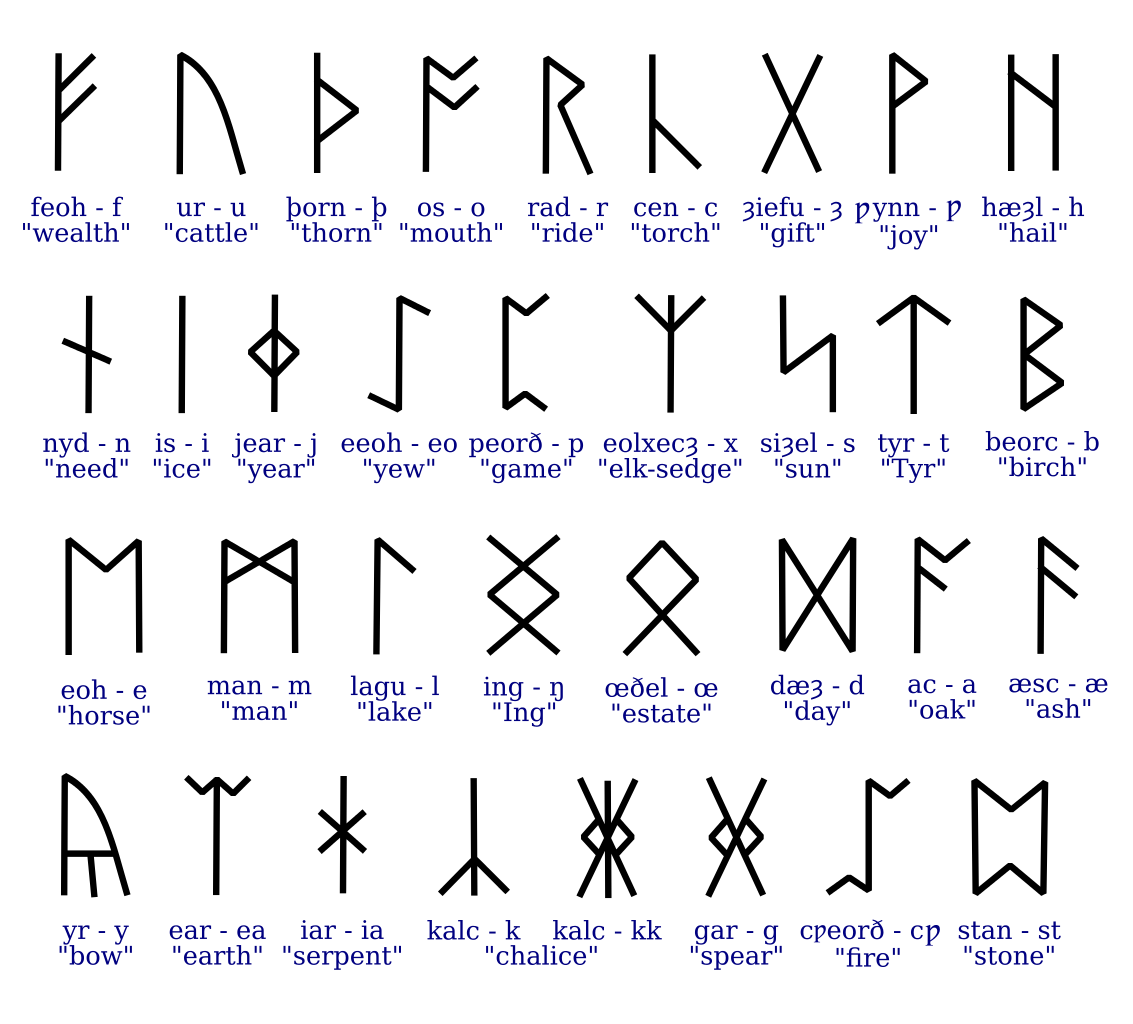
This would imply that Runes are symbols representing timeline dynamics processes and astral archetypes that, through the etheric mediator, generate spacetime events.
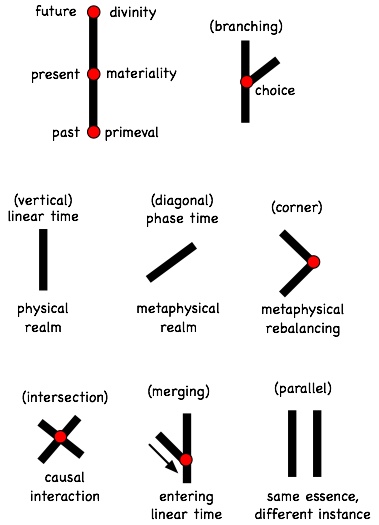
Historically, the Scandinavian runes trace back to the Phoenician alphabet, and the Phoenicians were among the proto-Israelites who possessed the Ark Stone. See the ViewZone articles on Queen Sheba for more on this.
From the above, the World Axis is definitely associated with spacetime. But there is a third element involved. In Hindu Mythology, the World Axis is a giant pillar that rotates back and forth, churning the surrounding milky ocean and thereby precipitating chunks of butter.
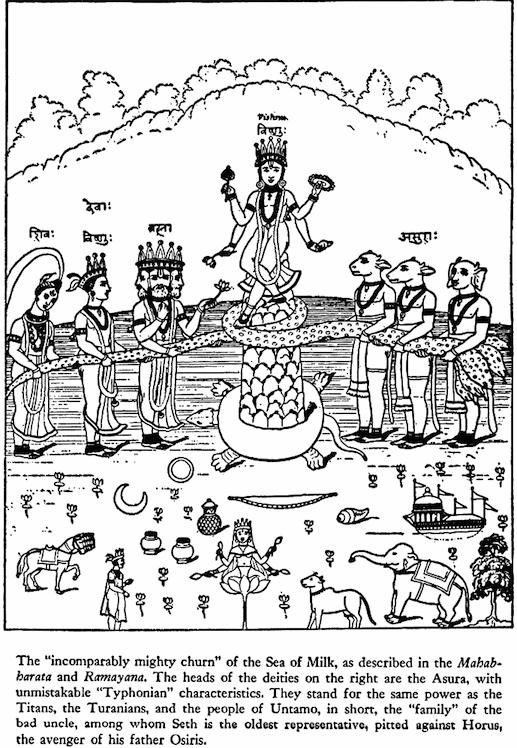
(from Hamlet's Mill)
Similarly, there is the Finnish myth of the Sampo, a magical artifact that like the Grail Stone was capable of creating objects and foodstuffs out of thin air. In the Kalavela, it was depicted as a rotating millstone that once ground out infinite abundance during a Golden Age. A similar millstone called the Grotte appears in Icelandic lore.
What these symbols highlight is a central rotational aspect connected with creation. In the World Axis, therefore, we find not only the concept of spacetime, but also the axis upon which spacetime can rotate or pivot. What is this pivot point? It is the quantum aperture, the choice point, the moment of wave function collapse, the window of nondeterminism where timelines are in flux. It's the hinge upon which reality pivots.
Probable futures are arrayed around this quantum pivot point at various quantum phase angles, somewhat like tree branches arrayed at various angles around their common point on the tree trunk.
What separates one probable future, one alternate past, or one event from another is the quantum phase angle unique to each. This has a couple implications:
First, regarding the quantum phase that separates one timeline from another, to alter the quantum phase of the past means to switch it from one timeline to another; this equates to changing the angular position of the world pillar, hence a reciprocation of the pillar means a back-and-forth alteration of the timeline.
Second, regarding the kind of quantum phase that distinguishes one moment from another, since time itself is a continual progression from one event to the next, time is identically a continual cycling of this quantum phase. While that much is taught in college textbooks, the cause of this continual cycling is not addressed. As I discussed in the previous article, the Demiurge is the cause of time. Cycling is precisely what the Demiurge does in being the default collapser of our collective wave function and thus perpetuator of physical reality as we know it. This continual phase cycling, which generates a particular timeline tree, may be mythologically represented in the rotating millstone that ground out a bygone Golden Age when the Demiurge or World Soul was in harmony with the Logos.
In summary, in its purest form the World Axis represents the quantum pivot point and the surrounding spacetime framework that rests upon it.
3) Dueling superhumans engaged in a tug of war.
In Hindu mythology, around the pillar is wrapped a serpent. The divine Devas hold one end of the serpent while the infernal Asuras hold the other. They are engaged in a tug of war; as one side gains, the pillar rotates one way, and as the other side gains, the pillar rotates the other way. This is what causes reciprocation of the pillar.
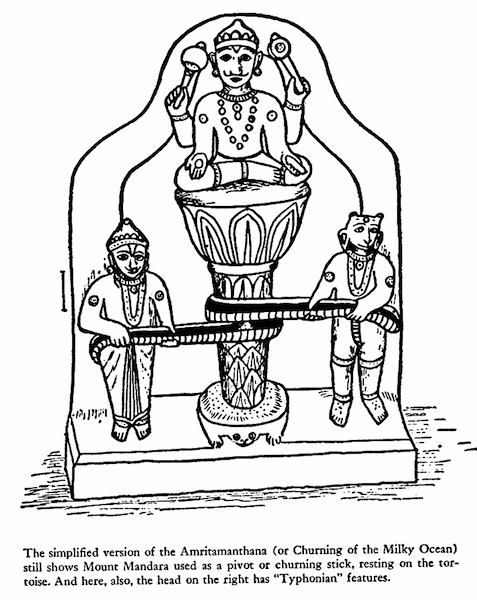
(from Hamlet's Mill)
What does the serpent represent, fundamentally?
The Serpent of Genesis is usually depicted as being wrapped around the Tree of Knowledge.
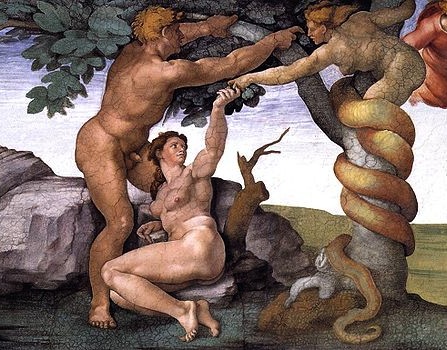
In ancient Greek tradition, the Orphic Egg is an egg representing Creation, around which is wound the World Serpent.
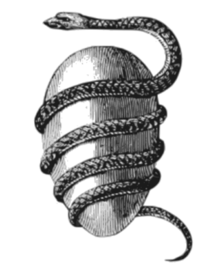
In Norse mythology, a giant serpent named Jörmungandr encircles the middle portion of the World Tree. This World Serpent is always depicted as the outer perimeter encircling our world:
According to the Prose Edda, Odin took Loki's three children, Fenrisúlfr, Hel and Jörmungandr, and tossed Jörmungandr into the great ocean that encircles Midgard. The serpent grew so large that he was able to surround the Earth and grasp his own tail. When he lets go, the world will end. As a result, he received the name of the Midgard Serpent or World Serpent. Jörmungandr's arch-enemy is the god Thor. ( source)
The snake eating its own tail is the ouroboros, which can be interpreted in two ways.

First is that it represents the Demiurge, in its corrupted state, attempting to consume its own Creation. That is exactly what negative (STS) forces do by enslaving other beings — they ignore that all life is One, that by hurting others they are hurting other instances of themselves; they are like the head of the snake ignoring that the tail is its own. The same principle shows up in the Greek myth of Cronus, a.k.a. Saturn, eating his own children.

In myth, the god Saturn is known as Father Time, for he presides over the passage of linear time. The planet Saturn itself bears an ouroboric resemblance via its prominent rings. In metaphysics, since Saturn is the outermost of the seven classical planets, it is seen as the gateway into our realm, into linear time. In Parzival, the cycles of Saturn governed the intensity of Grail King Amfortas's perpetual wound. To be "saturnine" means to be slow, gloomy, and depressed. Orfeo Angelucci's contacts called Earth the 'home of sorrows.' The World Dream, as stated in the previous article, is more a World Nightmare. And in Kabbalah, Saturn is explicitly equated with the Demiurge:
Saturn is the third sphere of divine activity, called Binah – Understanding or Intelligence.
This is the power which organises the creative forces and imposes form on the universe. It is thus the root of matter. It is also the female principle, for it is through conception and birth that we acquire material form. ( source)
This leads straight into the second and more traditional meaning of the ouroboros, which once again concerns time. As explained in the previous article, linear time is inflated and sustained by the Corrupted Demiurge, but linear time is an illusory existence that has no permanence relative to what is beyond this World Dream. In being created from nothing by a runaway artificial intelligence incapable of true Creation, linear existence may be transitory like matter and antimatter popping out of the vacuum before annihilating.
In being borrowed from the Void, our timeline may be a self-defeating causal loop whose end is its beginning and vice versa, an illusory spacetime bubble inflated by transient dichotomies that sum to zero. Hence the snake eating its own tail; when it lets go, the time bubble pops, and the World Dream ends.
The serpent also symbolizes etheric energy. In the Old Testament, Moses fixed a bronze serpent to a cross and any who gazed upon this serpent would be healed.
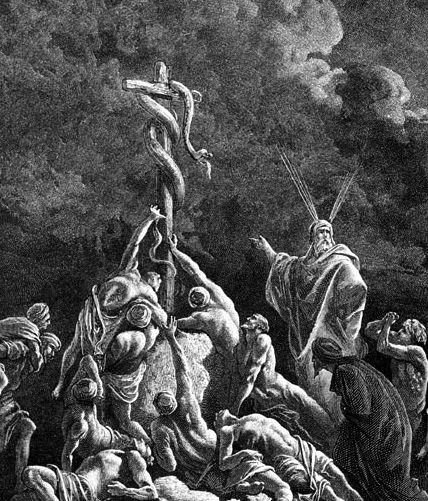
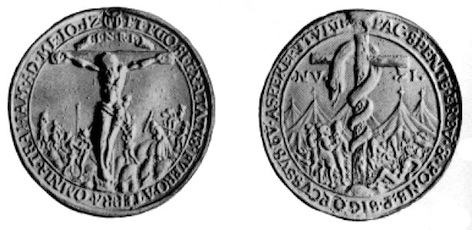
Similarly, the rod of Asclepius and staff of Hermes (caduceus), are also healing symbols involving serpents wrapped around sticks.


In Alchemy, the serpent is found in connection with the phrase "fixing the volatile," denoting an alchemical operation represented by a snake having swallowed a stick and being unable to move, or wrapped around a cross like the brazen serpent of Moses. As explained, Alchemy involves impregnating physical matter with etheric energy. This is ultimately what is meant by fixing the volatile, meaning to anchor etheric energy into physical substance.
Kundalini energy is depicted as a serpent coiled at the base of the spine. According to occultism, its function there is to keep us anchored and asleep in the illusion, thus it has a soporific influence in that state. This implies that Kundalini is an energy associated with the Corrupt Demiurge. On the other hand, its activation and discharge up the spine in a prepared initiate is said to bring enlightenment and psychic powers, meaning full etheric activation, which implies that Kundalini is an energy associated with the Logos or, in Christian terminology, the Holy Spirit.
What to make of this contradiction? Simply stated, Kundalini energy is another name for a demiurgic energy (etheric) that serves a special role in our bodies. Depending on the nature and state of etheric energy, it can have positive or negative effects. For instance, people whose Kundalini activates prematurely can go insane or suffer spontaneous human combustion.
Egyptian pharaohs were sometimes depicted as having a serpent called the Uraeus extending from their third eye, which may have represented a focused beam of etheric energy emitting from that region, as happens in cases of strong psychic activation.
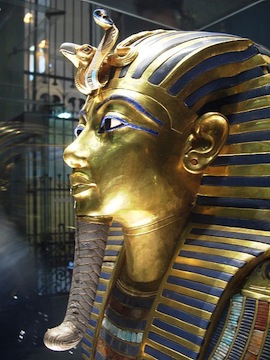
In summary, the serpent represents etheric energy, the Corrupt Demiurge, and/or linear time. All these concepts are different facets of the same thing. The Demiurge encompasses physical reality just as Jörmungandr encircles Yggdrasil; the Serpent of Genesis represents the Archonic factions who were agents of the Corrupt Demiurge; and in both Kundalini and Alchemy, the Serpent represents etheric energy.
Returning to the Hindu depiction of the World Axis, if pillar rotation angle represents quantum phase, then the back and forth tug of war between the Devas and Asuras is identically a timewar. The complete picture then portrays polarized factions of the meta-civilization altering the timeline one way then another depending on who has the greater pull. They are tugging on the Demiurge, employing etheric energy fields to modify spacetime. By pulling reality closer towards the Logos or the Corrupted Demiurge, the timeline reconfigures accordingly. This churning precipitates corresponding spacetime events out of the etheric substrate of reality like butter forming in a sea of milk.
4) That which the World Axis rests or depends upon: a foundational element represented in the cubical stone, turtle, keystone, plug, cornerstone, or capstone.
The second most important element in polar mythology is the foundation upon which the framework of creation depends. The meeting point between this foundation and the World Axis is the quantum pivot point mentioned earlier. Removing or disturbing the foundation causes the entire World Axis to fall out of alignment.
In Hindu and Mayan myth, the World Pillar pivots atop the back of a turtle. Even in Native American myth, turtles symbolize the foundation of the world. Why turtles? They are distinguished by their hard round shells, often of a hexagonal shape decorated with a hexagonal pattern.

Anyone familiar with the works of Stan Tenen, Nassim Haramein, or William Tiller will recognize the importance of hexagon lattices in the substructure of reality. In the hexagon lattice we find the Flower of Life and Tree of Life patterns.
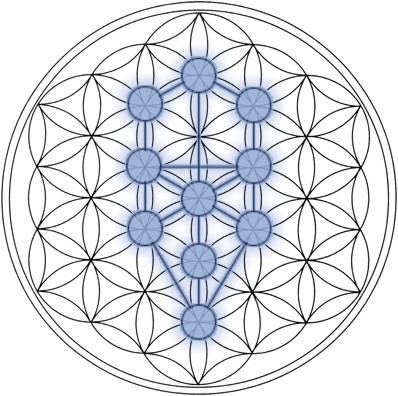
As Stan Tenen explained, it's a mathematical curiosity that seven hexagons can fit on a torus (doughnut) so that every side of one hexagon touches the side of every other hexagon. The torus is a three dimensional projection of a four dimensional hypersphere.

This hyperdimensional structure is divided into seven regions, like the seven colors of a rainbow or the seven densities in the Ra/Cassiopaean cosmology, with each color touching every other color. The turtle with its rounded hexagonal lattice is a suitable natural symbol for this principle.
Aside from the turtle, another variation of the foundational element is the cube, especially a cubical stone, which, when viewed from a corner, has the appearance of a hexagon.
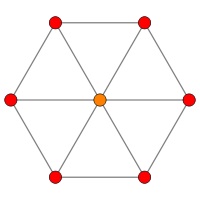
The Rune called Hagal bears the shape of an asterisk, three lines intersecting like a snowflake, which in science depicts the three orthogonal axes of space.


Hagal means hail, which are "stones" that fall from the sky. In the Anglo Saxon Runes, this same symbol means "Serpent."
In the Armanen Rune system, Hagal is said to be the "world rune" or "mother rune" because in it are inscribed the shape of all other Rune symbols, thus it is the foundation from which the rest of the "alphabets of existence" are generated.

Like the Tree of Life, Flower of Life, or the hexagon lattice, it represents the foundation of manifested existence.
Another fallen stone associated with the cube is the Black Stone inside Kaaba, the cubical structure at the heart of Islam to which all Muslims must pray and visit once in their lifetime. Kaaba in the city of Mecca is the ritual cornerstone of the Muslim world.
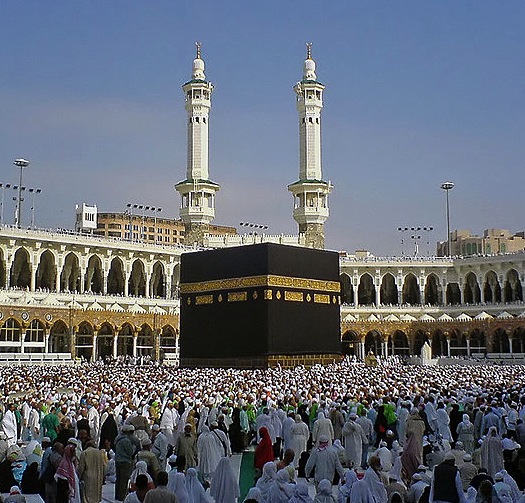

The cornerstone, capstone, or keystone is yet another depiction of the lynchpin or foundational element. The cornerstone is traditionally the first stone laid during construction of a building, to which all other stones are aligned, much like Hagal being the seed crystal to the rest of the Runes. The capstone of a pyramid is not a lynchpin so much as a representation of the key element without which the pyramid remains incomplete and nonfunctional. And a keystone is the central stone of a rounded arch without which the arch collapses.

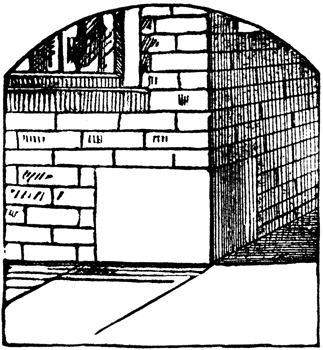
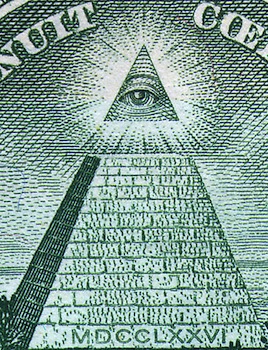
The stone, fallen from the sky, associated with the foundation of physical existence, the seed crystal of reality, the lynchpin that holds the World together — what is it? It is the Grail Stone, which serves as the seat or anchor of the World Soul. The combination is what perpetuates the momentum of a timeline.
Sometimes the stone cube is shown with a tree growing upon it, paralleling the pillar resting atop the turtle. These symbols depict the foundational, anchoring, and timeline pivoting function of high demiurgic technology. Timelines trace back to the quantum pivot point that gave rise to them, and this pivot point can be acted upon by high demiurgic technology to uproot or anchor timelines. Thus the Grail/Ark Stone functions as the corner stone, capstone, or keystone of the timeline it brings into existence.
5) Vortex symbolism and magical "objects of plenty" that materialize abundance or destruction depending on their use.
The vortex is the quintessential symbol of polar mythology because it represents manifestation spiraling toward or away from a central principle or singularity. Passage through the singularity means transduction or transubstantiation from one level of existence to another.
The Demiurge is the central principle of our physical universe, and its transubstantiation of astral archetypes into physical manifestation resembles a vortex swallowing one substance, compressing and transforming it, and emitting it on the other side of the singularity. The singularity in this case is the quantum aperture, where thoughts turn into reality, or where consciousness pivots reality. These singularities are portals through which metaphysics influences physics. They are where spacetime ends and begins.
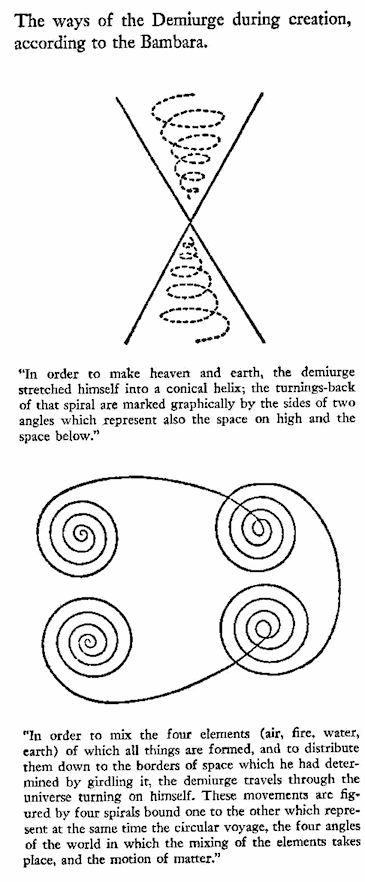
(from Hamlet's Mill)
It is no surprise, therefore, that the World Axis is depicted with vortical attributes.
Mount Meru takes the shape of a double vortex, like an hour glass; it is a mountain that narrows in the middle and spreads out at the top.
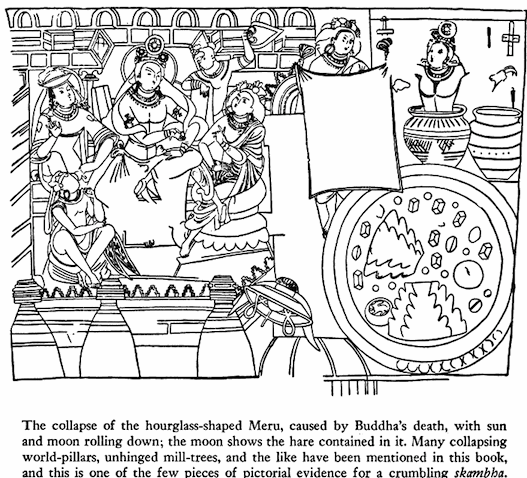
(from Hamlet's Mill)
The cinched middle is seen in the Mayan depiction of same.
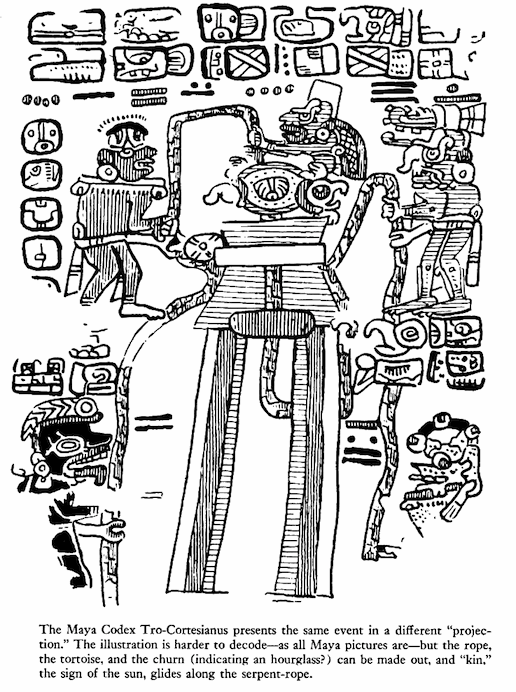
(from Hamlet's Mill)
Likewise, the Tree of Knowledge and Yggdrasil have diverging crown and root. The middle cinched portion is the shared singularity between two vortices, each opening into their respective realm.
The single vortex appears in the Hindu pillar, which narrows at the bottom and flares at the top; same with the vortex-like drill shown in an Egyptian stele depicting Horus and Seth tugging on a rope wrapped around it.
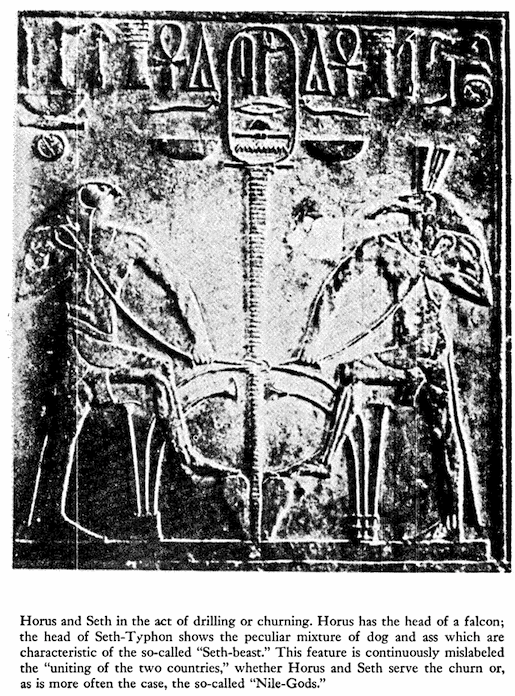
(from Hamlet's Mill)
In these cases, the singularity is at the bottom of the vortex, for instance the pivot point where the pillar meets the turtle shell.
The whirlpool is just a broader and flatter vortex defined by a prominent eye at the center. Upon reaching the end of their pilgrimage at Mecca, Muslims circle around the Kaaba (cube) in a manner resembling a large whirlpool.
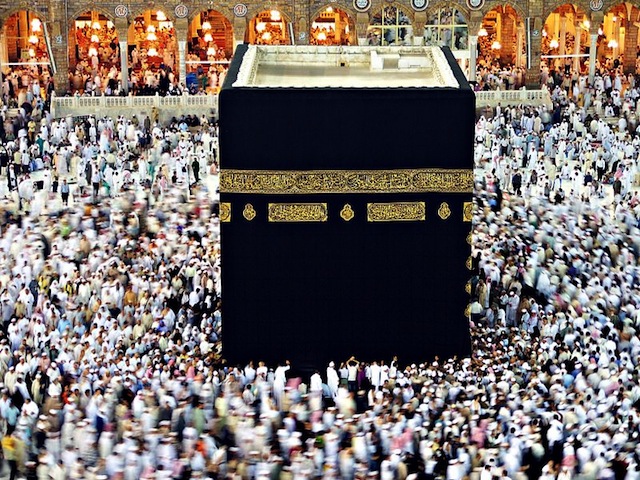
Another example is the millstone, a round stone with spiral grinding grooves radiating from a central hole.

Millstones resemble whirlpools, especially when rotating and grinding. That they grind out flour for bread, the "staff of life," makes them perfect symbols for high demiurgic technology that once materialized foodstuffs out of the ambient etheric field. A Sumerian tablet depicting the Ark Stone before a seated king visually resembles the eye and furrows of a millstone:
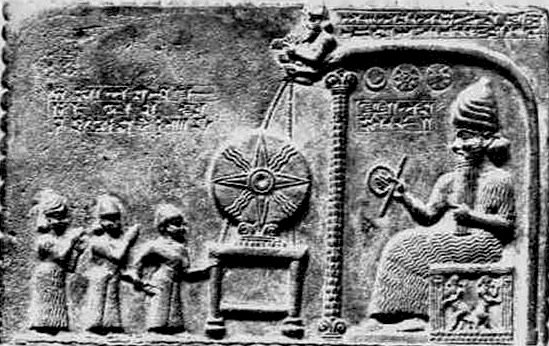
But the vortex can take literal form as well. As mentioned, the Ark Stone was accompanied by the columnar plasma vortex, the Shekhina. When activated, the Great Pyramid (Mount Sinai) likewise emitted a "plume of smoke" that may have been a plasma vortex. The "pillar of fire" that went before the proto-Israelite procession out of Egypt is another example. The original legend of a Pharaoh pursuing the fleeing Semites said he died "in the place of the whirlpool." And the water-filled bronze basin kept at the Temple of Solomon was precisely circular in shape, ideal for carrying a whirlpool of water within.
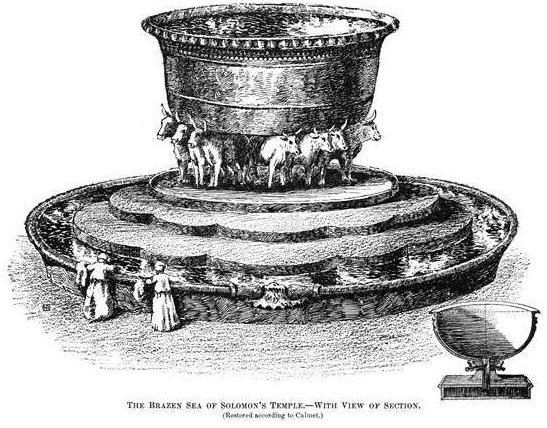
It seems that even in a literal and observable way, vortices accompanied the activation of high demiurgic devices like the Ark Stone. The Ark and Grail Stone manifesting food from thought show that high demiurgic technology is the basis of the so-called "stones of plenty" mentioned in myths.
Another example of vortex topology comes from the Greek myth:
Classical mythology offers multiple explanations of the origin of the cornucopia. One of the best-known involves the birth and nurturance of the infant Zeus, who had to be hidden from his devouring father Cronus. In a cave on Mount Ida on the island of Crete, baby Zeus was cared for and protected by a number of divine attendants, including the goat Amalthea ("Nourishing Goddess"), who fed him with her milk. The suckling future king of the gods had unusual abilities and strength, and in playing with his nursemaid accidentally broke off one of her horns, which then had the divine power to provide unending nourishment, as the foster mother had to the god.
In another myth, the cornucopia was created when Heracles (Roman Hercules) wrestled with the river god Achelous and wrenched off one of his horns; river gods were sometimes depicted as horned. ( source)
This Horn of Plenty is yet another allusion to the vortex because a horn has a conical vortical shape. Its production of unlimited milk parallels the Grail stone manifesting food for the knights or the Ark Stone generating quail and manna for the proto-Israelites.
The Horn of Plenty tradition continues today in the form of the cornucopia, a woven basket shaped like a vortex or horn, usually shown on its side spilling out an abundance of fruit. It's a tradition seen in America at Thanksgiving.
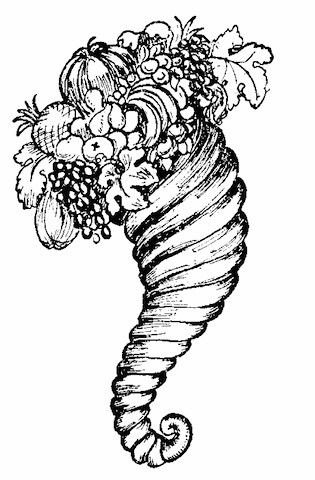

The cornucopia symbolizes fertility, harvest, and overflowing abundance. It is yet another portrayal of a vortex emitting foodstuffs.
So far we see two manifestations of the vortex archetype, a more abstract and universal one associated with the World Axis, and a more tangible and local form associated with the energy field surrounding high demiurgic technology. These are just two scales of application of demiurgic principles, the first concerning solidification and reorientation of entire worlds and timelines, the second only a small portion for local applications like materializing food. Both act upon the quantum aperture or pivot point to bring otherwise mere possibilities into existence.
6) Cataclysmic unhinging or skewing of the World Axis
As documented in Hamlet's Mill, several myths speak of a catastrophic disturbance of the World Axis usually brought on by unwise disturbance of the foundation stone or object of plenty. For example:
- An Icelandic tale about the Grotte, a magical millstone whose owner employed two giant maidens to turn it and thereby grind out "gold, peace, and happiness." In greed, he cruelly overworked them, and in revenge they manifested a foreign invader who came and killed him. The invader took the Grotte and maidens aboard his ship and ordered them to continue grinding the mill, but the maidens ground out only salt. Under too much strain, the ship broke apart and the Grotte sank to the bottom of the ocean, seeding the ocean with salt and generating a massive whirlpool via the water flowing through its central eye.
- The Finnish tale of the Sampo, a magical millstone forged by a primeval smith for a powerful sorceress who promised him her daughter in return. Through the mill, the sorceress can keep her land peaceful and bountiful. The smith marries her daughter who later dies, and when he asks the sorceress for another daughter she refuses. In revenge, he and his brother attempt to steal the Sampo from her. They break into the "mountain of copper" where the sorceress had sealed it and where the Sampo had sunk its roots deep into the earth like a tree. Using a giant bull to plough up the roots, they steal the Sampo and carry it away by ship. The sorceress intercepts them and snatches the Sampo away but drops it into the ocean where it shatters into myriad pieces. The smith and his brother only manage to gather up some of these pieces.
The authors of Hamlet's Mill viewed such stories as merely encoding astronomical knowledge concerning the precession of the equinoxes. For instance, the starry sky resembles a whirlpool or millstone as it rotates.
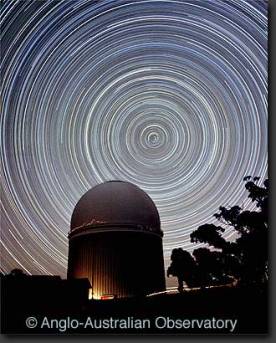
Hence the axis of a great millstone becoming unhinged simply follows from ancient astronomers observing that the central pole of the rotating heavens is not where it used to be, due to precession of the Earth's axis. While logical, this interpretation is limited. Precession itself has greater significance than a mere astronomical curiosity.
Precession of the Earth's axis causes the equinox, solstice, and pole positions to wander over a 25,920 year cycle known as the Platonic Year. The observed position of the Sun at Spring Equinox gradually shifts from one zodiac sign to another at the rate of one degree every 72 years. Depending on the sign, the world is said to be in the "Age" of that sign.
In ancient Egypt, the Ark Stone drama transpired during the Age of Taurus transitioning into the Age of Aries. Reflecting this, the Finnish millstone myth speaks of a great "bull of heaven" that was harnessed to uproot the millstone, allowing it to be stolen from its "mountain of copper" and transported away.
We are now in the Age of Pisces transitioning into the Age of Aquarius, from an age where we are but fish in the river of time, to a future where we pour the river ourselves.
The state of the World Soul seems to correspond to these precessional ages. Each age carries a specific momentum of cultural, historical, and spiritual development during that time span. Perhaps the World Soul is modulated by the astrological energies of the various ages, or maybe the Grail Stone is used at transition points between signs to "change the program" accordingly.
Two astronomical vortical phenomena include the shape of our galaxy and the hour-glass figure traced by precession of Earth's axis.
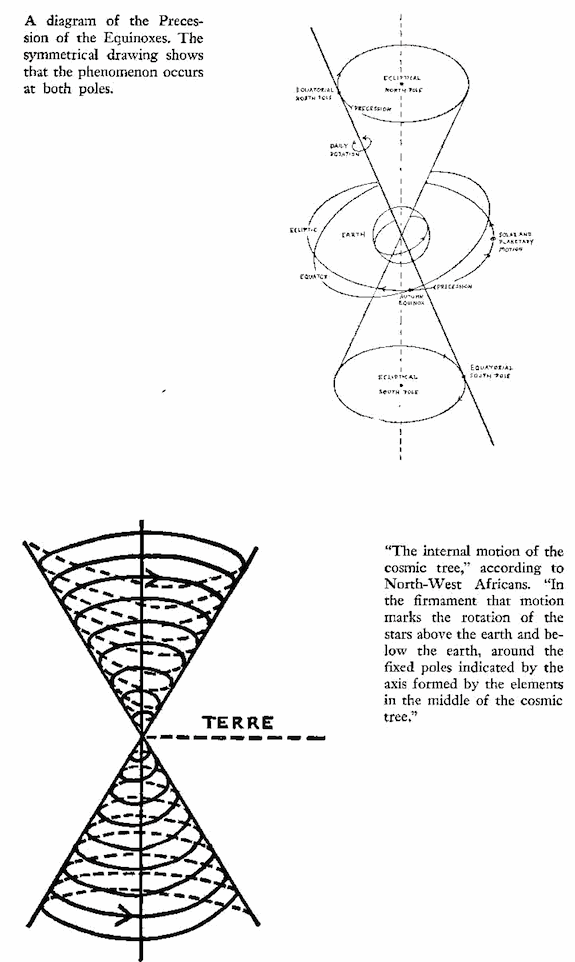
(from Hamlet's Mill)

(Image credit: NASA/JPL-Caltech)
It just so happens that 25,920 years is approximately how long it takes light to travel between Earth and the super black hole at the center of the Milky Way. This suggests some kind of resonance between Earth and the Galactic Center whose frequency is inversely proportional to the Platonic year.
The implication is that the state of the World Soul is somehow interlocked with the electromagnetic, gravitational, and/or etheric resonance between Earth and the Galactic Center. This may mean that different world ages, and thus World Soul states, correspond to different locations along the wave spanning Earth to Galactic Center. As the wave travels, Earth experiences different phase angles of this wave, and currently it take 25,920 years to cycle through them all. At each phase angle (wave position) Earth's axis points to a different pole position in the sky and the World Soul has a different coloration.
This indicates the Galactic Center is what generates the Etheric Tide. Since high demiurgic technology is deployed on Earth during times of heightened etheric potency, one can see its use being timed according to astronomical cycles. Thus the "program changes" or modulations of the World Soul are intricately coupled to precessional cycles whose effects are catalyzed by demiurgic technology.
Incidentally, this could explain a big mystery in astrology. Due to precession over thousands of years, the astrological sun signs of the zodiac no longer correspond to the constellations they were originally associated with.

The twelve zodiac signs and their corresponding days of the year correlated perfectly back in 800-1000 B.C. when the zodiac system was devised in Babylon. Since that time, things have shifted back one complete sign. While there exists sidereal astrology that takes this into account, the more common tropical astrology uses the same system from 800 B.C. on the grounds that it's not about the stars in the sky, but the position of earth in its orbit around the sun, i.e. the season of the year that determines your zodiac sign. But that explanation fails when it comes to moon and rising signs, which have nothing to do with orbital position around the sun and are likewise disconnected from the actual constellations they are supposed to represent.
The big mystery is that sidereal astrology works, despite being astronomically baseless as far as the zodiac is concerned. If you are Taurus, the sun at your time of birth was actually in the constellation of Aries, and yet you may exhibit all the personality traits fitting of the Taurean archetype. Same goes for the moon and rising signs. And yet these signs are only correct according to the sky as it existed nearly three thousand years ago.
Somehow people's souls are being molded by energies from the time of ancient Babylon and Israel. That was also the beginning of the particularly corrupted timeline that culminated in today's precarious world situation. It's as if the World Soul state from 1200-800 B.C. never went away with the advent of the Age of Pisces in 100 BC-100AD. Even though we technically passed from the Age of Taurus to the Age of Pisces, the "program change" did not execute fully.
Where else have we encountered this dynamic during that same historical time frame? In the Hermetic lore of Christ's mission being a failure. ("Ichthys" the fish being a symbol for Christ, as well as a disguised vesica pisces). Intervention by the Christ thoughtform turned into an unfinished attempt at undoing and overwriting the "program" of Yahweh and the Old Testament ways. Thus both now exist in a limbo state, competing for the fate of the world.
The wheel of the zodiac is the wheel of linear time, the Grotte grinding away at the bottom of the ocean. Linear time is associated with the Corrupted Demiurge, and people being molded by tropical astrological influences is nothing more than their deterministic, mechanical, and unconscious side having its strings pulled by the levers of the World Dream.
Undoubtedly there is an astronomical layer embedded in polar mythology, but it's not the only layer. Rather than myths encoding astronomy for the sake of astronomy, astronomy may serve as a mnemonic framework to help memorize and preserve myths. Such a framework would outlast even what is chiseled into stone. Polar myths contain a deeper payload than just astronomical knowledge. The latter merely serves as pegs onto which key Gnostic knowledge can be hung. Instead of awing at the pegs, one should examine the Gnostic payload, which is the higher meaning of these myths. And yet, these meanings are synchronistically embedded in the astronomical phenomena themselves, for they are but World Dream symbols.
The astronomical interpretation does not explain why, for instance, the Hindu pillar reciprocates back and forth according to which side has the stronger pull, unlike the starry sky that rotates and precesses in a steady manner. The Grotte had a cover that only rotated at the transition point between world ages, otherwise the millstone sunk its roots deep into the ground like a tree and was still, anchoring in place the world age it gave rise to. These myths speak of too many discontinuities, cataclysms, battles, and arbitrary reciprocations of the World Axis to only be references to earth's rotation or precession.
Conclusion
The millstone rooted in place is an allusion to the Grail Stone anchoring a World Soul in place, to create and perpetuate a particular timeline. After the millstone was stolen and fell into the ocean, however, it ground out sand and stones and created a giant maelstrom that continues circulating to this day. This mythical whirlpool does indeed parallel the rotating starry sky, but only because the latter symbolizes the passage of linear time. The millstone falling into the ocean and churning a whirlpool symbolizes abuse of the Grail Stone causing our deeper collective fall into the World Dream, into the dark well of linear time.
It all points to our physical reality being one grand machine involving Earth, Sun, Galactic Center, Etheric Tide, collective consciousness, and high demiurgic technologies interacting to determine the particular timeline or state of reality we experience.
Taken to its logical conclusion, the astronomical phenomena encoded in polar mythology may themselves be physical reflections, or World Dream Symbols, of even greater Demiurgic principles.
Reality, the ultimate oxymoron, is not simply a deterministic assemblage of matter and energy, but a perennially mutable product of intelligent creation. The World Dream is a fractal mosaic reflecting hyperdimensional archetypes and events. This includes the moon and stars in our sky, in whose patterns the heathen Flegetanis is said to have read the name of the Grail.
Further Reading
The Mystery of the Grail (Inner Traditions, 1997) – by Julius Evola. Provides background on Grail lore, which includes various examples of polar mythology.
Hamlet's Mill – De Santillana and Von Dechend. Online version of this classic book on comparative mythology. The authors propose a rather mundane hypothesis that mythology encodes knowledge concerning precession of the equinoxes. But beyond the astronomical layer there is a hyper dimensional one. Unhinging of the world axis is not just about equinoctial precession, but the cataclysmic unhinging of our time axis that resulted in a fallen, corrupted timeline we are now experiencing. Read the book from that higher dimensional perspective to unlock the inner meaning of these myths.
The Hero with a Thousand Faces – Joseph Campbell. Comparative mythology that explores the unifying psychology of self-transcendence present in myths the world over. Some of these myths are polar in nature.
![]()
![]()
Disclaimer:
Some material presented will contain links, quotes, ideologies, etc., the contents of which should be understood to first, in their whole, reflect the views or opinions of their editors, and second, are used in my personal research as "fair use" sources only, and not espousement one way or the other. Researching for 'truth' leads one all over the place...a piece here, a piece there. As a researcher, I hunt, gather and disassemble resources, trying to put all the pieces into a coherent and logical whole. I encourage you to do the same. And please remember, these pages are only my effort to collect all the pieces I can find and see if they properly fit into the 'reality aggregate'.
Personal Position:
I've come to realize that 'truth' boils down to what we 'believe' the facts we've gathered point to. We only 'know' what we've 'experienced' firsthand. Everything else - what we read, what we watch, what we hear - is what someone else's gathered facts point to and 'they' 'believe' is 'truth', so that 'truth' seems to change in direct proportion to newly gathered facts divided by applied plausibility. Though I believe there is 'truth', until someone representing the celestial realm visibly appears and presents the heavenly records of Facts And Lies In The Order They Happened, I can't know for sure exactly what "the whole truth' on any given subject is, and what applies to me applies to everyone. Until then I'll continue to ask, "what does The Urantia Book say on the subject?"
~Gail Bird Allen
![]()
![]()














-
Urantia Book, 44:0.11 - The Celestial Artisans
Never in your long ascendancy will you lose the power to recognize your associates of former existences. Always, as you ascend inward in the scale of life, will you retain the ability to recognize and fraternize with the fellow beings of your previous and lower levels of experience. Each new translation or resurrection will add one more group of spirit beings to your vision range without in the least depriving you of the ability to recognize your friends and fellows of former estates.
-
Princess Bride 1987 Wallace Shawn (Vizzini) and Mandy Patinkin (Inigo Montoya)
Vizzini: HE DIDN'T FALL? INCONCEIVABLE.
Inigo Montoya: You keep using that word. I do not think it means what you think it means. -
Urantia Book, 117:4.14 - The Finite God
And here is mystery: The more closely man approaches God through love, the greater the reality -- actuality -- of that man. The more man withdraws from God, the more nearly he approaches nonreality -- cessation of existence. When man consecrates his will to the doing of the Father's will, when man gives God all that he has, then does God make that man more than he is.
-
Urantia Book, 167:7.4 - The Talk About Angels
"And do you not remember that I said to you once before that, if you had your spiritual eyes anointed, you would then see the heavens opened and behold the angels of God ascending and descending? It is by the ministry of the angels that one world may be kept in touch with other worlds, for have I not repeatedly told you that I have other sheep not of this fold?"
-
Urantia Book, Foreword - 0:12.12 - The Trinities
But we know that there dwells within the human mind a fragment of God, and that there sojourns with the human soul the Spirit of Truth; and we further know that these spirit forces conspire to enable material man to grasp the reality of spiritual values and to comprehend the philosophy of universe meanings. But even more certainly we know that these spirits of the Divine Presence are able to assist man in the spiritual appropriation of all truth contributory to the enhancement of the ever-progressing reality of personal religious experience—God-consciousness.
-
Urantia Book, 1:4.3 - The Mystery Of God
When you are through down here, when your course has been run in temporary form on earth, when your trial trip in the flesh is finished, when the dust that composes the mortal tabernacle "returns to the earth whence it came"; then, it is revealed, the indwelling "Spirit shall return to God who gave it." There sojourns within each moral being of this planet a fragment of God, a part and parcel of divinity. It is not yet yours by right of possession, but it is designedly intended to be one with you if you survive the mortal existence.
-
Urantia Book, 1:4.1 - The Mystery Of God
And the greatest of all the unfathomable mysteries of God is the phenomenon of the divine indwelling of mortal minds. The manner in which the Universal Father sojourns with the creatures of time is the most profound of all universe mysteries; the divine presence in the mind of man is the mystery of mysteries.
-
Urantia Book, 1:4.6 - The Mystery Of God
To every spirit being and to every mortal creature in every sphere and on every world of the universe of universes, the Universal Father reveals all of his gracious and divine self that can be discerned or comprehended by such spirit beings and by such mortal creatures. God is no respecter of persons, either spiritual or material. The divine presence which any child of the universe enjoys at any given moment is limited only by the capacity of such a creature to receive and to discern the spirit actualities of the supermaterial world.
-
Urantia Book, 11:0.1 - The Eternal Isle Of Paradise
Paradise is the eternal center of the universe of universes and the abiding place of the Universal Father, the Eternal Son, the Infinite Spirit, and their divine co-ordinates and associates. This central Isle is the most gigantic organized body of cosmic reality in all the master universe. Paradise is a material sphere as well as a spiritual abode. All of the intelligent creation of the Universal Father is domiciled on material abodes; hence must the absolute controlling center also be material, literal. And again it should be reiterated that spirit things and spiritual beings are real.
-
Urantia Book, 50:6.4 - Planetary Culture
Culture presupposes quality of mind; culture cannot be enhanced unless mind is elevated. Superior intellect will seek a noble culture and find some way to attain such a goal. Inferior minds will spurn the highest culture even when presented to them ready-made.
-
Urantia Book, 54:1.6 - True And False Liberty
True liberty is the associate of genuine self-respect; false liberty is the consort of self-admiration. True liberty is the fruit of self-control; false liberty, the assumption of self-assertion. Self-control leads to altruistic service; self-admiration tends towards the exploitation of others for the selfish aggrandizement of such a mistaken individual as is willing to sacrifice righteous attainment for the sake of possessing unjust power over his fellow beings.
-
Urantia Book, 54:1.9 - True And False Liberty
How dare the self-willed creature encroach upon the rights of his fellows in the name of personal liberty when the Supreme Rulers of the universe stand back in merciful respect for these prerogatives of will and potentials of personality! No being, in the exercise of his supposed personal liberty, has a right to deprive any other being of those privileges of existence conferred by the Creators and duly respected by all their loyal associates, subordinates, and subjects.
-
Urantia Book, 54:1.8 - True And False Liberty
There is no error greater than that species of self-deception which leads intelligent beings to crave the exercise of power over other beings for the purpose of depriving these persons of their natural liberties. The golden rule of human fairness cries out against all such fraud, unfairness, selfishness, and unrighteousness.


